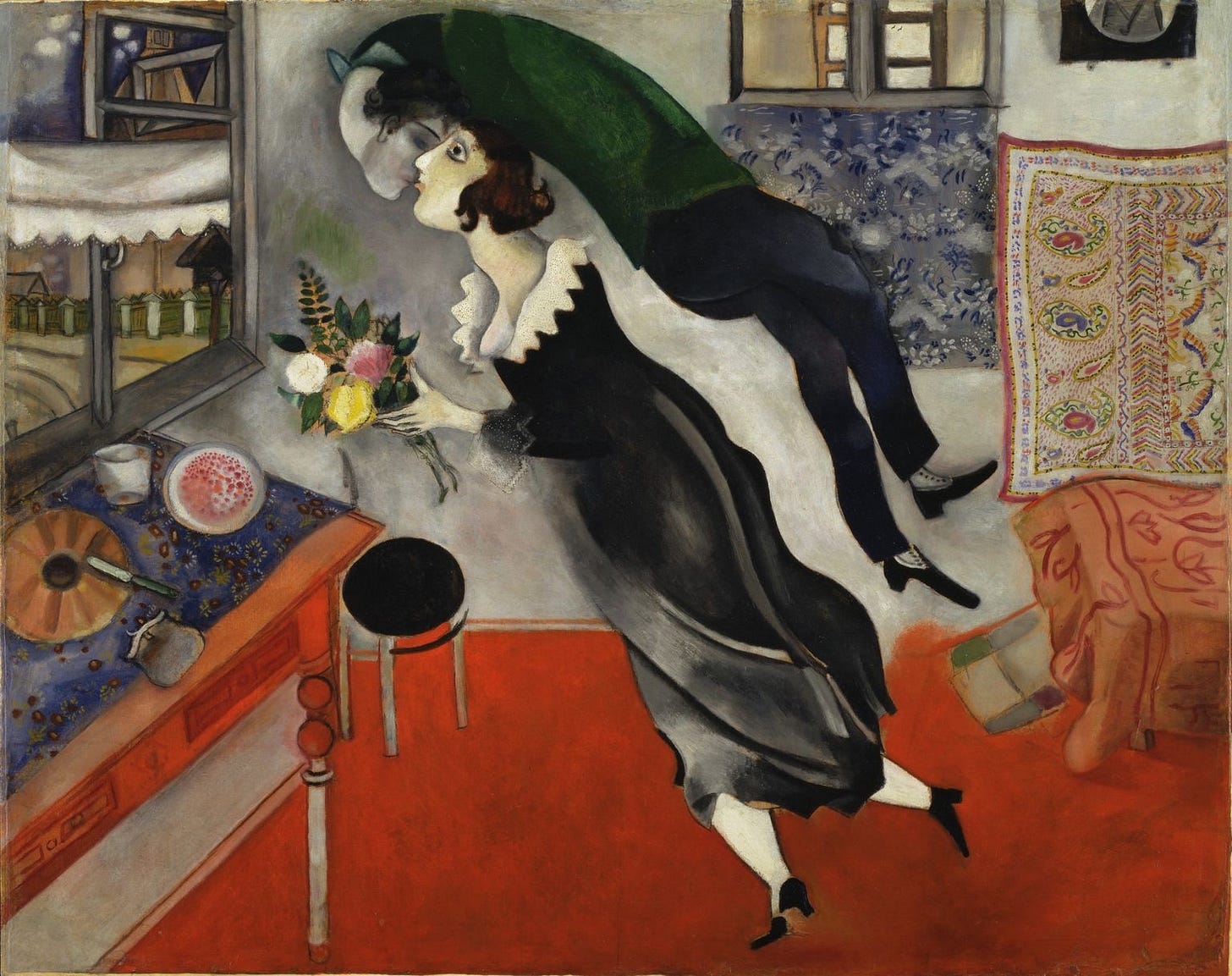Love: Demonstrations of: Deference and Complaisance
WHEN DR. STICKLER gave them the news that Lorna was pregnant, Herb and Lorna felt, immediately, that this made everything just perfect — not that either wanted things to remain forever as they were, but each felt that for now, with a baby on the way, everything was perfect. But then Herb began to worry. He worried that Lorna might not want a child now, while they were living with the Mikszaths, while he was trying to make a start at Babbington Studebaker. More than anything else he wanted Lorna to be happy, and he thought that he had to make her happy. And then Lorna began to worry. She worried that Herb might not want a child now, while they were living with the Mikszaths, while she was working to make ends meet. She wanted him to be happy; she thought she had to make him happy.
Herb ’n’ Lorna, Chapter 10
Love: Demonstrations of: Munificence
Love: Demonstrations of: Levitation
Marc Chagall called “love” the primary color of his paintings. The central source of the love in his life was his wife, Bella. They met when Bella was a teenager in their home town of Vitebsk, Belarus. In 1915, Chagall finally married Bella, despite the opposition of her parents, who wanted a better match for their daughter.
The Birthday was painted by Chagall in 1915 just a few weeks before he and Bella married. The painting is a wonderful expression of the amazing, flowing and powerful love these two shared. Chagall is pictured flowing and dream-like, floating above Bella. His head is unrealistically craned upside down and backward as he twists around to kiss his future wife on the mouth.
Bella is depicted holding a cheerful bouquet of flowers and also floating in the air, as if just lifting off. The couple is suspended in loving bliss in a bright living room setting dominated below by a vivid red carpet. The painting is balanced above by the ivory, beige and tans of the living room furniture and wall decorations. …
The painting is a marvelous creation which powerfully conveys that feeling of euphoric love between young lovers in a blissful yet ordinary setting that seems to ooze happiness out of every square inch of canvas.
[more to come on Tuesday, August 9, 2022]
Have you missed an episode or two or several?
You can begin reading at the beginning or you can catch up by visiting the archive or consulting the index to the Topical Guide.
You can listen to the episodes on the Personal History podcast. Begin at the beginning or scroll through the episodes to find what you’ve missed.
You can ensure that you never miss a future issue by getting a free subscription. (You can help support the work by choosing a paid subscription instead.)
At Apple Books you can download free eBooks of “My Mother Takes a Tumble,” “Do Clams Bite?,” “Life on the Bolotomy,” “The Static of the Spheres,” “The Fox and the Clam,” “The Girl with the White Fur Muff,” “Take the Long Way Home,” “Call Me Larry,” and “The Young Tars,” the nine novellas in Little Follies, and Little Follies itself, which will give you all the novellas in one handy package.
You’ll find an overview of the entire work in An Introduction to The Personal History, Adventures, Experiences & Observations of Peter Leroy. It’s a pdf document.



